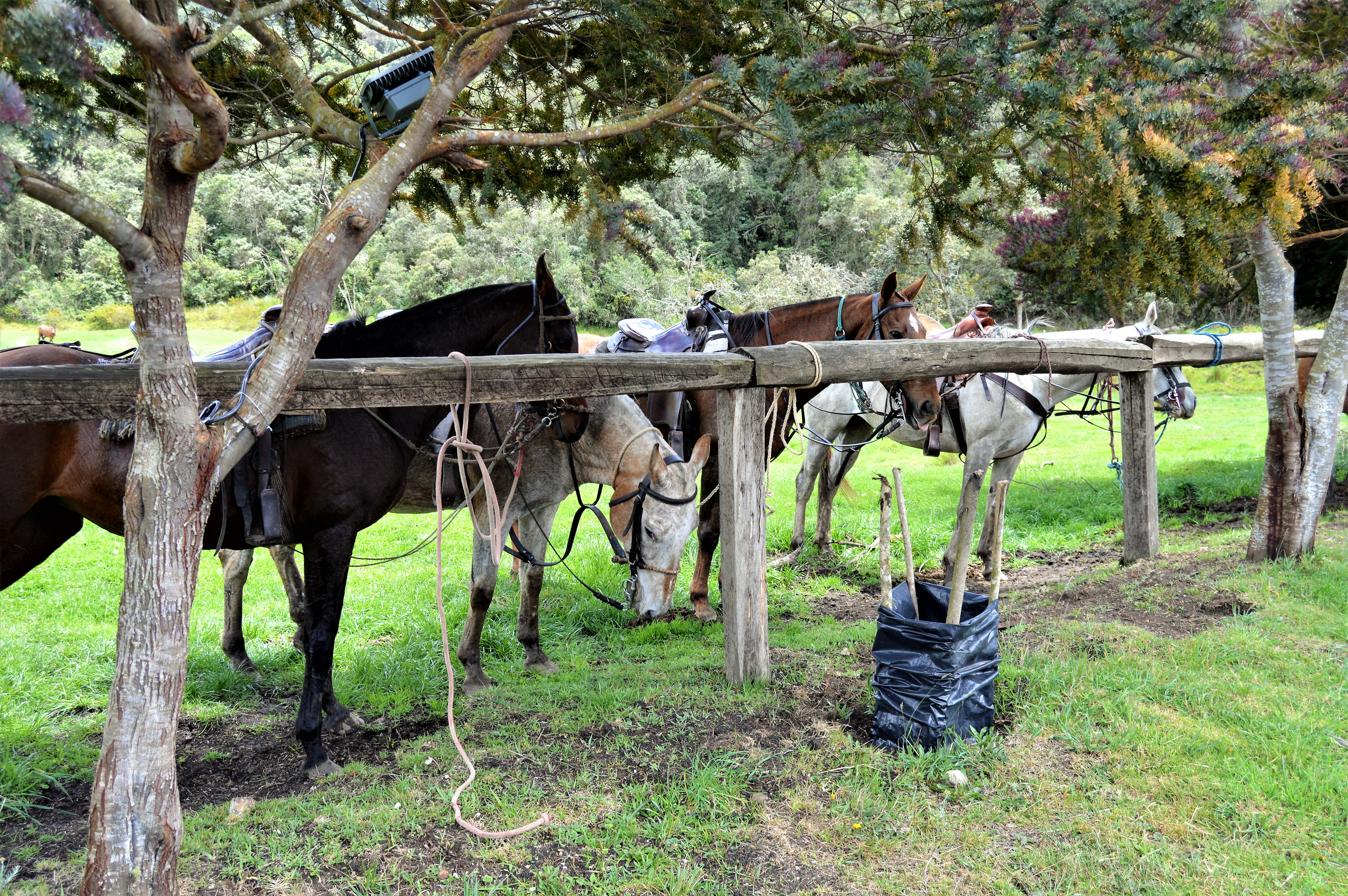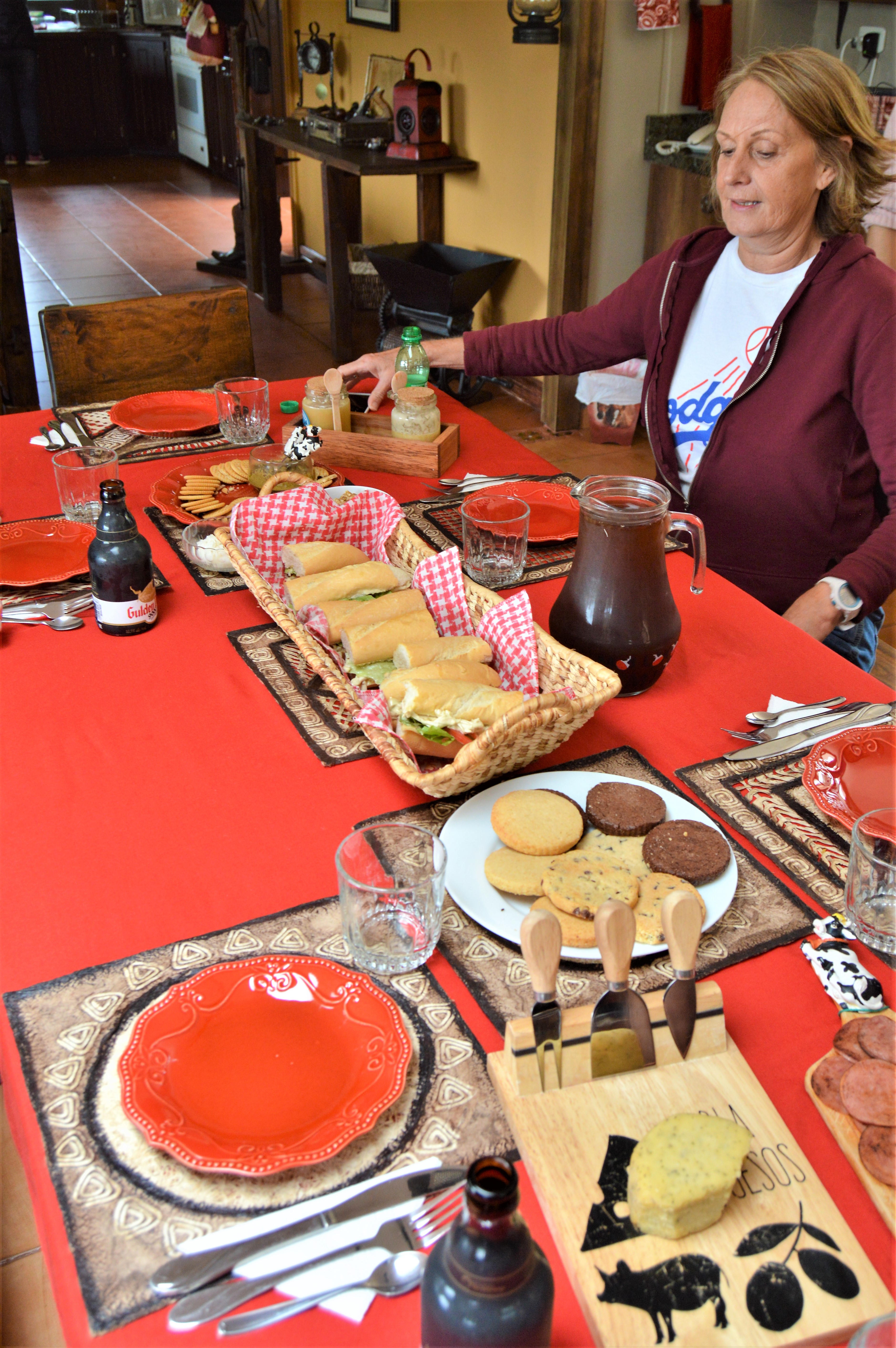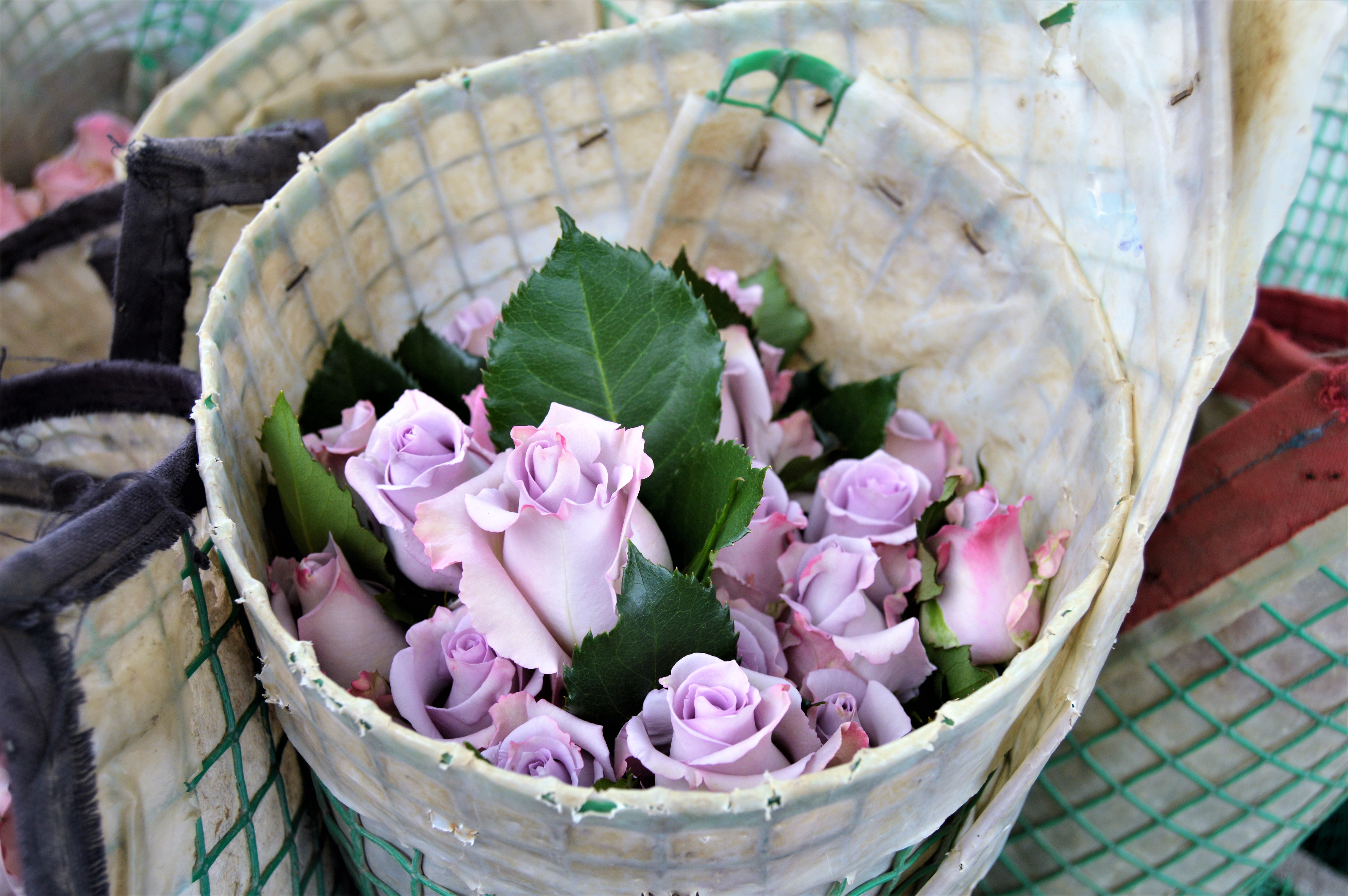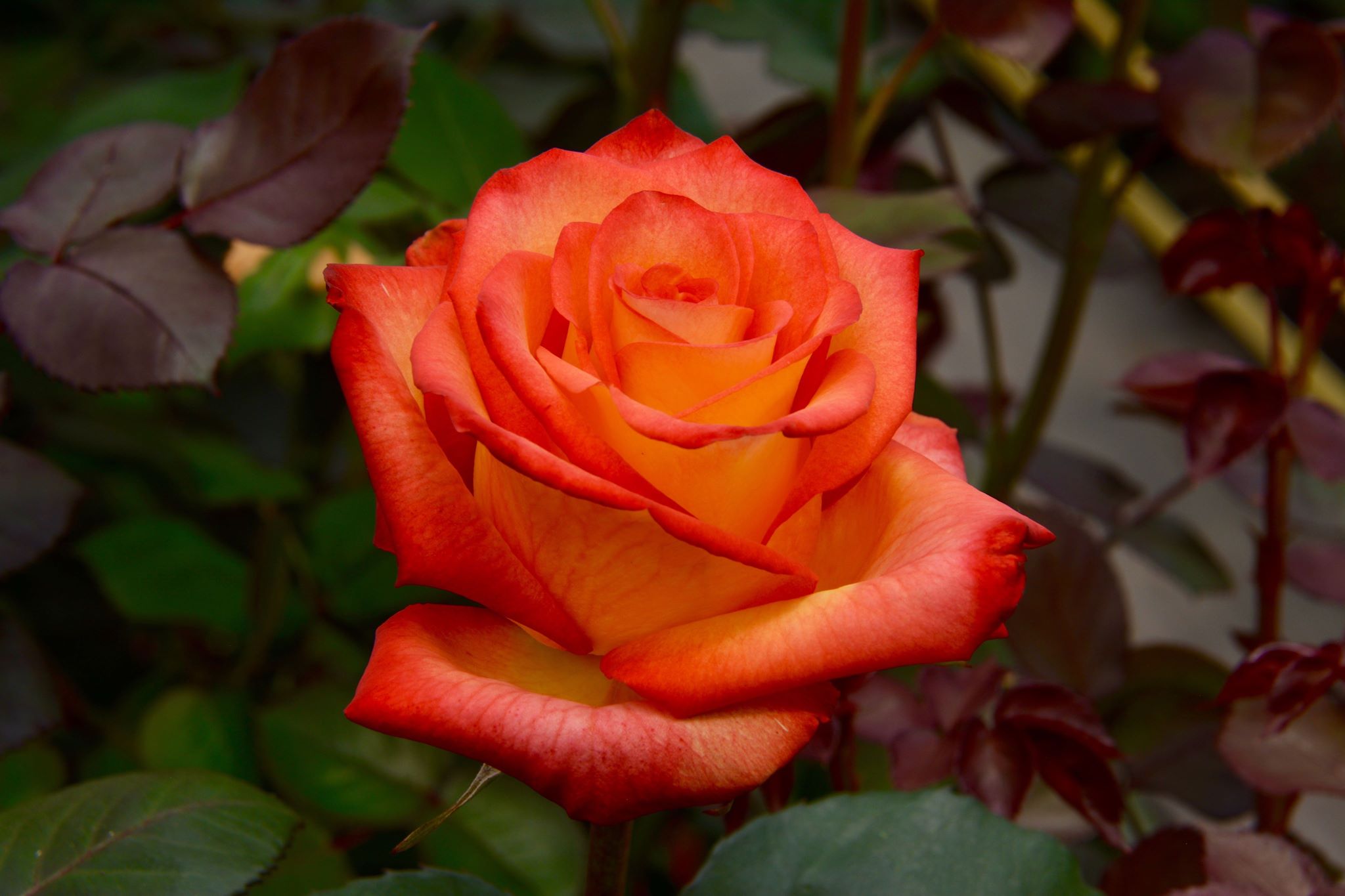Horses, Me and the Andes

When I was a kid, I would race home after school to our 100-year-old country farmhouse.
Throwing on old clothes, I would hurry to the stables behind our house in search of my favorite horse, Cissy, a tall, red thoroughbred. Sometimes I would take time to saddle her, but more often than not, we would head out into the plowed fields with me riding bareback.
In those days, we were surrounded by onions and cotton, but few homes. It was a peaceful escape from the busy world. Exhilaration surged through my bones as Cissy and I raced against the hot El Paso winds in peace and freedom.
When I threw a leg over a saddle at Rancho Patococha not long ago, I was pleasantly surprised to rediscover that old sensation. The uncontrolled grin spread across my face as I shifted to allow Pato, the caretaker, to adjust my stirrup. The spirited polo pony beneath me was stomping the ground, ready to hit the trail.

Rancho Patachocha is a jewel hidden among the Andean mountains less than an hour from Cuenca. Operated by Santiago Malo and his family, the ranch offers occasional weekend rides for just $50. The price includes transportation to and from Cuenca, a two-hour ride, and lunch.
Groups are accompanied by two experienced riders and the ride conforms to the riders’ abilities. With three other experienced horsewomen, I recently made the trip deep into the mountainside with high expectations.
Just when we were beginning to wonder how we would navigate the winding, dirt road if the seasonal rains came, we turned into a driveway. We were awed by the sprawling, charming ranch house before us.
Piling out of the car, we shuffled on to the wide, open verandah. Rockers, sofas and comfortably padded chairs beckoned to us. Slumping down into the nearest spot we could only gasp at the beautiful vista. Horses were snorting nearby, ready to ride; cloud-tipped mountaintops beckoned on the horizon; and the peaceful quiet settled over us like a warm, alpaca blanket.
 Inside, we were offered coffee, tea and a restroom break. A collection of cowboy hats was laid out for our choosing.
Inside, we were offered coffee, tea and a restroom break. A collection of cowboy hats was laid out for our choosing.
Back outside, our host, Santiago’s son Sebastian, and Pato, matched us to our horses. They adjusted our equipment, snapped a group photo, and we were off.
We headed through the mountains on a dirt road. Seemingly never-ending, the road wound several miles into lush, fertile landscapes, miles away from traffic and population.
 The horses sauntered through the hushed countryside. Occasionally, we encountered smiling residents working their fields or tending their houses. Once a pack of dogs disturbed our solitude, but the ponies were left unfazed. We took a shortcut up a mountainside through a lovely wooded grove. We paused at lookouts over unendingly verdant valleys. We chatted and we marveled – in silence – at the gift of unblemished nature.
The horses sauntered through the hushed countryside. Occasionally, we encountered smiling residents working their fields or tending their houses. Once a pack of dogs disturbed our solitude, but the ponies were left unfazed. We took a shortcut up a mountainside through a lovely wooded grove. We paused at lookouts over unendingly verdant valleys. We chatted and we marveled – in silence – at the gift of unblemished nature.
 We were fortunate to have Sebastian as our guide. He shared memories of growing up on horses and his current passion for rodeo riding. A former bull rider, he now is more interested in roping and steer wrestling. He hopes to gather interest for local rodeos soon.
We were fortunate to have Sebastian as our guide. He shared memories of growing up on horses and his current passion for rodeo riding. A former bull rider, he now is more interested in roping and steer wrestling. He hopes to gather interest for local rodeos soon.
The family also is active in polo. The horses we ride are well-tended, spirited polo ponies. The ranch is home to more than a dozen, as well as several young foals.
Two hours later, we returned to the ranch house. We were tired, but pleasantly satisfied as if we had just finished a delicious meal. My horse, ironically named Amy – the same as my little sister – had done all she could to revive some of the best memories of my life.
 Yes, we all had a case of the “short legs” upon return. There is something about riding a horse that makes you feel like you have lost half your height when you slide off. I noticed pain in places I never experienced as a young girl, riding bareback in the Southwest. OK, it’s true that I am three times older than that young girl now, but still…
Yes, we all had a case of the “short legs” upon return. There is something about riding a horse that makes you feel like you have lost half your height when you slide off. I noticed pain in places I never experienced as a young girl, riding bareback in the Southwest. OK, it’s true that I am three times older than that young girl now, but still…
Horseback riding is a highly physical activity. And, just like spending an intensive day at the gym, it can leave you with sore, achy muscles.
I decided to do a little research on the exercise of horseback riding. Here’s some interesting information I found from the blog https://enell.com/blogs/blog/5-reasons-horseback-riding-really-is-a-workout.
“Anything where you are keeping yourself from being bounced off is going to primarily use your core and your legs,” explained Kelly Turner, a certified personal trainer and fitness journalist. “Riding a horse supports core strength, which includes your abs, lower back, and obliques. In order to ride well, or comfortably, the rider must keep her core engaged, thus protecting the spine and keeping herself upright.
“Because you hold your position for an extended period of time, rather than having constant motion like you would in the gym, riding becomes an isometric workout. After 30 or so minutes of riding, your legs will be burning just the same as they would on leg day,” Turner said.
This is especially true for experienced riders whose horse is trotting or running, where Turner explained you’ll find yourself in a perpetual squatting position, working the glutes.
“As you bend the knees to absorb the impact of the horse’s steps, you are pulsing the muscles.”
Your thighs get one heck of a burn during a ride, too. Just the squeeze required to keep yourself perched in the saddle will awaken every ounce of thigh strength you possess. “Pinching your legs together to put pressure on the horse to increase the speed or just to keep yourself mounted is also going to target the inner thighs,” explained Turner.
Of course basic control of the horse also calls on arms and shoulders. Whether you are vigilant in keeping the horse focused on the path ahead, or reacting to his sudden urge to drop his nose and munch some grass, you are in for an upper body workout too.
I’m thinking about the workout as we drop into our familiar places on the porch and sip a beer. We pause long enough to regain our surface legs and take some time to inspect Pato’s tack room. And man, does Rancho Patococha have a tack room.
Rows of saddles lines the walls – both Western and English. Bridles are neatly hung at the ready nearby. We are told the equipment has been collected from around the world, South American and North America to England. Of course there are polo sticks and helmets there as well for the family’s use.
It is time for lunch and we are joined by Sebastian’s family. Surprised at our appetites, we enjoy sandwiches, fresh cheeses from the family’s dairy farm and meats, olives and dips. Everything tastes just that much better in high altitude after a brisk ride!
 The time comes to leave this idyllic setting. Our bodies are sore, our stomachs full and our souls are singing. It was an incredible journey. I will be back.
The time comes to leave this idyllic setting. Our bodies are sore, our stomachs full and our souls are singing. It was an incredible journey. I will be back.
 For information on horseback riding, contact Jane at laureles108@protonmail.com 097 907 2087 or find Rancho Patococha on Facebook.
For information on horseback riding, contact Jane at laureles108@protonmail.com 097 907 2087 or find Rancho Patococha on Facebook.












 They have all three gorgeous hues at Trebol Roses in the tiny village of La Carmela, near Nazon-Biblian, just 45 minutes from Cuenca. In fact, they have every shade you can imagine in 25 varieties flourishing over 30 acres.
They have all three gorgeous hues at Trebol Roses in the tiny village of La Carmela, near Nazon-Biblian, just 45 minutes from Cuenca. In fact, they have every shade you can imagine in 25 varieties flourishing over 30 acres. Women – and they are primarily women due to their gentle touch – each are assigned 20 flower beds. They are responsible for the health, care and feeding of blooms within those beds. At just the right time, blooms are selected for cutting – itself a learned talent.
Women – and they are primarily women due to their gentle touch – each are assigned 20 flower beds. They are responsible for the health, care and feeding of blooms within those beds. At just the right time, blooms are selected for cutting – itself a learned talent.








 Rosana explained that the family business began as a Panama hat export business in 1910. A few years later, her grandparents introduced dairy cows to the land. Susy and her husband now run the 100-year-old dairy farm while Rosana and her husband direct the rose plantation, founded on just two acres in 1997.
Rosana explained that the family business began as a Panama hat export business in 1910. A few years later, her grandparents introduced dairy cows to the land. Susy and her husband now run the 100-year-old dairy farm while Rosana and her husband direct the rose plantation, founded on just two acres in 1997.

 The workers are like family; Rosana told us, as many of them grew up together, playing in the fields and attending the same school. About 150 people work the farm year-round, with another 50 hired on during peak seasons like Valentine’s Day.
The workers are like family; Rosana told us, as many of them grew up together, playing in the fields and attending the same school. About 150 people work the farm year-round, with another 50 hired on during peak seasons like Valentine’s Day.

 By the way, there are no black roses. What might sometimes be referred to as a black rose is actually a dark red rose. Only one variety can be successfully dyed, a pinkish rose called Mondial. We saw beautiful examples of this process in the multicolor stems named Rainbow Tinted Roses.
By the way, there are no black roses. What might sometimes be referred to as a black rose is actually a dark red rose. Only one variety can be successfully dyed, a pinkish rose called Mondial. We saw beautiful examples of this process in the multicolor stems named Rainbow Tinted Roses. As if the educational tour is not enough, the sisters invited our group into their beautiful hacienda for a delicious lunch. Susy also happens to be trained in the culinary arts. She used the opportunity to demonstrate her considerable cooking skills and to give a quick class in grilling vegetables.
As if the educational tour is not enough, the sisters invited our group into their beautiful hacienda for a delicious lunch. Susy also happens to be trained in the culinary arts. She used the opportunity to demonstrate her considerable cooking skills and to give a quick class in grilling vegetables.



